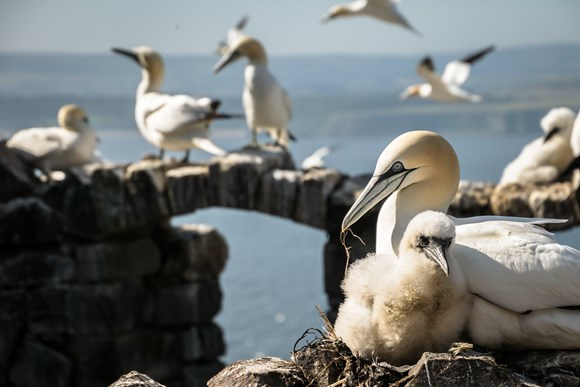NatureScot is advising public landings to stop on 23 Scottish islands in a bid to limit the spread of avian flu.
As of this week, the affected islands have been advised to stop public landings until chicks have fledged at seabird colonies.
In the Western Isles concern is growing for breeding gannets, storm-
Until mid-
Satillite islands around St Kilda are also under alert -
On the mainland side, public landing on Priest Island at the mouth of Loch Broom comes under the guidance.
The aim is to give seabirds the best possible chance to survive and recover from the current severe outbreak.
Visiting curbs are also in place at islands in the Highlands, Argyll, Orkney, Shetland, and Firth of Forth.
Eileen Stuart, NatureScot’s deputy nature director said: “Many of our Scottish islands are a haven for internationally important bird populations.
“With the avian flu crisis evolving so quickly, we have to respond to reduce the spread of this virulent disease. Tragically, this destructive disease could be with us for some time to come.”
The agency said visitors will still be able to enjoy the summer seabird spectacle by taking boat trips to seabird colonies without coming ashore, or by viewing seabirds from a safe distance without entering nesting areas.
The situation will be under constant review and restrictions will be lifted as soon as possible, once the birds have finished breeding.
Relevant commercial boat operators have also been alerted, as well as all other recreation and visitor bodies and the local access authorities.
The measure is the latest in response to growing concern over the spread and impact of the current H5N1 strain of avian flu, particularly in seabird colonies.
The virus is widespread across Scotland, with positive cases recorded in Shetland, Orkney, Outer and Inner Hebrides, Highland, Moray, Aberdeenshire, Angus, Fife, East Lothian and Scottish Borders. Seabird colonies at Noss, Hermaness, Hoy, St Kilda, Troup Head, Handa, Bass Rock and St Abbs have all been badly affected.
Great skua, gannet and guillemot have been hardest hit. Sample surveys of colonies show up to a 85% at decline of great skua at colonies in Orkney and up to 25% decline in gannet numbers at Shetland colonies. Great black-

Curbs on visiting 23 small Scottish islands during bird flu outbreak
21 July 2022